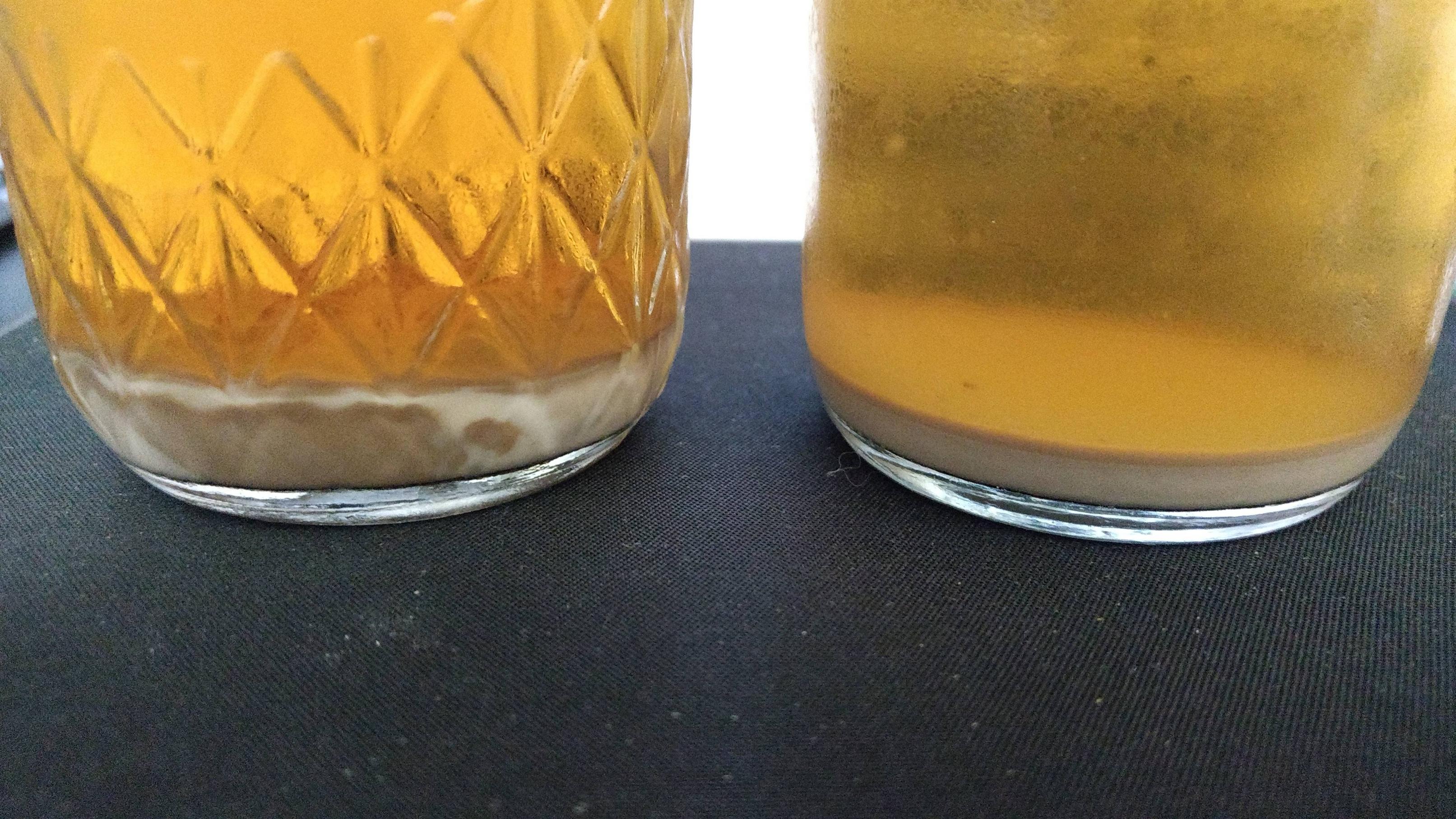Submitted for your disapproval:
I have 4 1/2 pint jars (each a different strain) that have been in the back of my fridge for a year, give or take. Each has 1/4 to 1/2 inch layer of yeast on the bottom. I was overbuilding my starters to save this amount, back when I thought I might be able to use each fairly regularly by stepping up to a good-sized starter before pitching.

Each jar now has a thin dark layer on top of the yeast cake. The jar on the left also shows some fairly large, darker blobs throughout the cake as well as on top. That yeast was one that I actually recovered from a previous year-long storage, then used a couple of times before abandoning this particular sample to the fridge, so it's probably 4th or 5th generation by now.
I think I know what needs to be done with these jars, but just for the sake of curiosity:
- what exactly is this dark layer? dead yeast? contamination? maybe contamination in the jar on the left (totally likely) and just dead yeast in the jar on the right?
- I know I'm justified in letting all 4 jars go (better safe than sorry), but my inner scientist wants to know if it's worth trying to build any of the better-looking jars back up with a stepped starter. I know it's possible, just not sure whether the potential for yeast mutation and/or contamination will doom the entire enterprise.
I have 4 1/2 pint jars (each a different strain) that have been in the back of my fridge for a year, give or take. Each has 1/4 to 1/2 inch layer of yeast on the bottom. I was overbuilding my starters to save this amount, back when I thought I might be able to use each fairly regularly by stepping up to a good-sized starter before pitching.

Each jar now has a thin dark layer on top of the yeast cake. The jar on the left also shows some fairly large, darker blobs throughout the cake as well as on top. That yeast was one that I actually recovered from a previous year-long storage, then used a couple of times before abandoning this particular sample to the fridge, so it's probably 4th or 5th generation by now.
I think I know what needs to be done with these jars, but just for the sake of curiosity:
- what exactly is this dark layer? dead yeast? contamination? maybe contamination in the jar on the left (totally likely) and just dead yeast in the jar on the right?
- I know I'm justified in letting all 4 jars go (better safe than sorry), but my inner scientist wants to know if it's worth trying to build any of the better-looking jars back up with a stepped starter. I know it's possible, just not sure whether the potential for yeast mutation and/or contamination will doom the entire enterprise.





















![Craft A Brew - Safale BE-256 Yeast - Fermentis - Belgian Ale Dry Yeast - For Belgian & Strong Ales - Ingredients for Home Brewing - Beer Making Supplies - [3 Pack]](https://m.media-amazon.com/images/I/51bcKEwQmWL._SL500_.jpg)



















